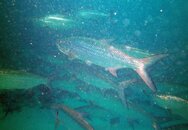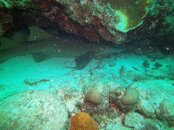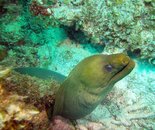drrich2
Contributor
Hi:
Recently got back from a week in Bonaire, 4-20-13 to 4-27-13. So let me emphasize this dive took place on a trip in late August 2012, and was not from the most recent trip. Cai is an east coast shore dive, and as such can be 'challenging' - even downright dangerous. Normally someone suggested shore diving the east coast of Bonaire I'd look at them like they were crazy.
But I've got a good dive buddy, with very similar experience and certifications to my own (up through PADI Rescue, and we dive Nitrox EAN 32 there), and he's very athletic, small and lean, has great air consumption, can cut through current like a fish and has good situational awareness and is a much better navigator than me. (If you're curious, yeah, this is the buddy I made the ill-fated attempt at Playa Chikitu April 2013, described in a different thread).
It's generally recommended to most divers to avoid shore diving the east coast, at least without a guide, from what I understand. But 2 sites that do show up on the maps are Cai and White Hole. And he wanted to try it. So...
Disclaimer: I ran these pics through Adobe Photoshop Elements 8 for Mac, & used 'Autolevels' on all.
My aerial shot (from plane window departing) of the Lac Bay area. There's a dirt road cutting across the island, running alongside the green vegetated area. You head to the coast & take a left.
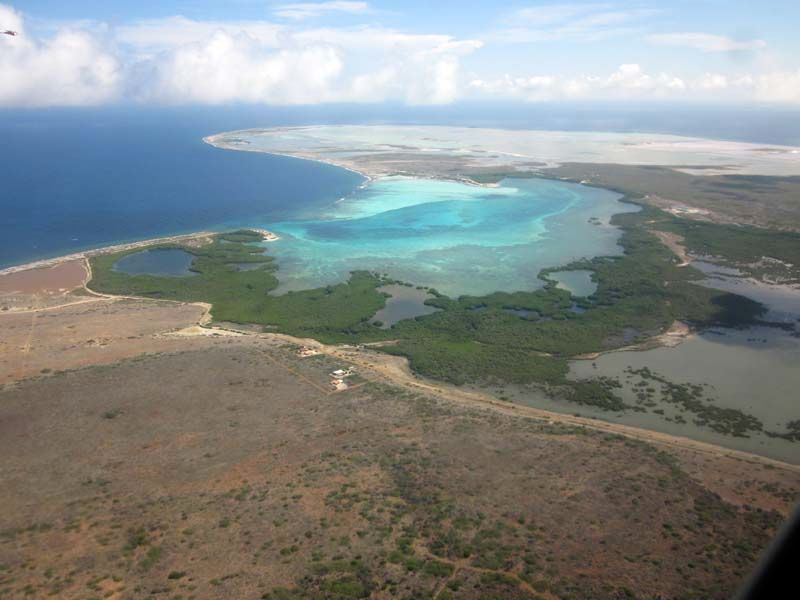
You come to what looks like a line of buildings ('shacks' comes to mind) on your right, and some big piles of conch shells along the coast.
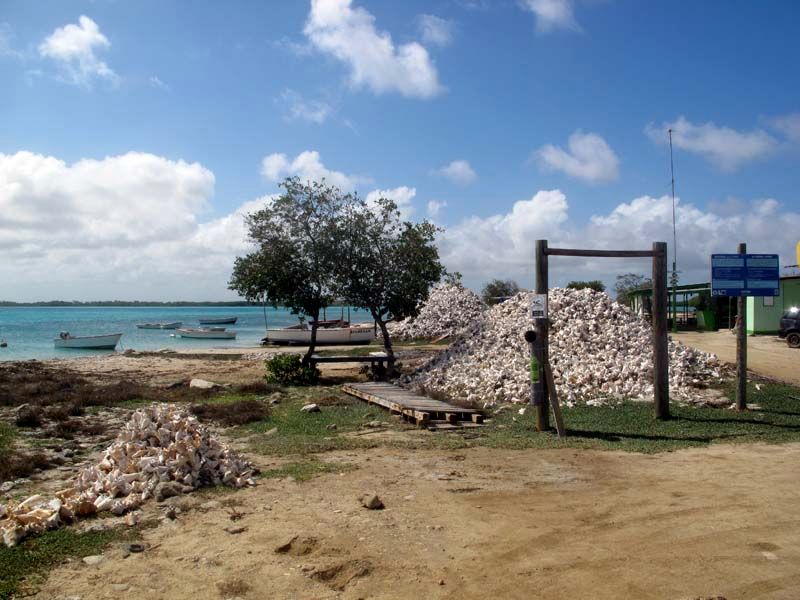
We didn't have a guide, so we entered near where the shell piles start, if memory serves just north of there.
Pretty, huh?
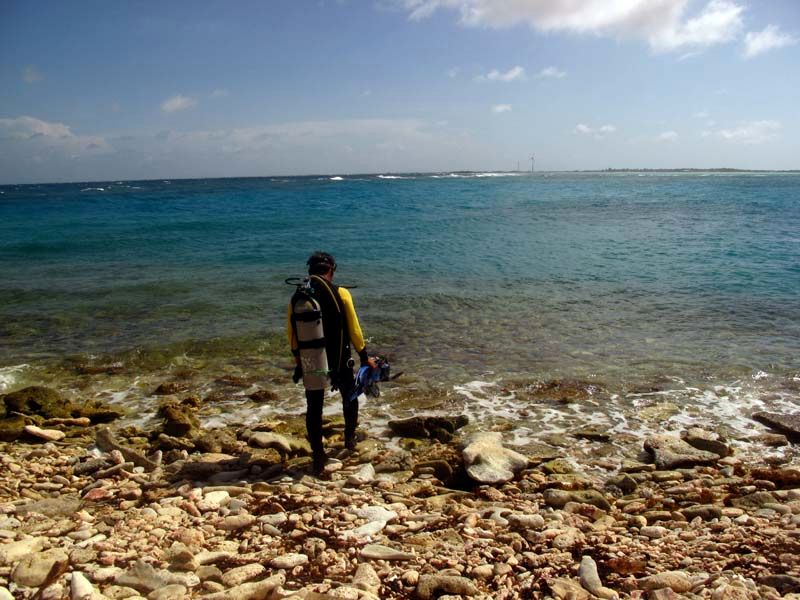
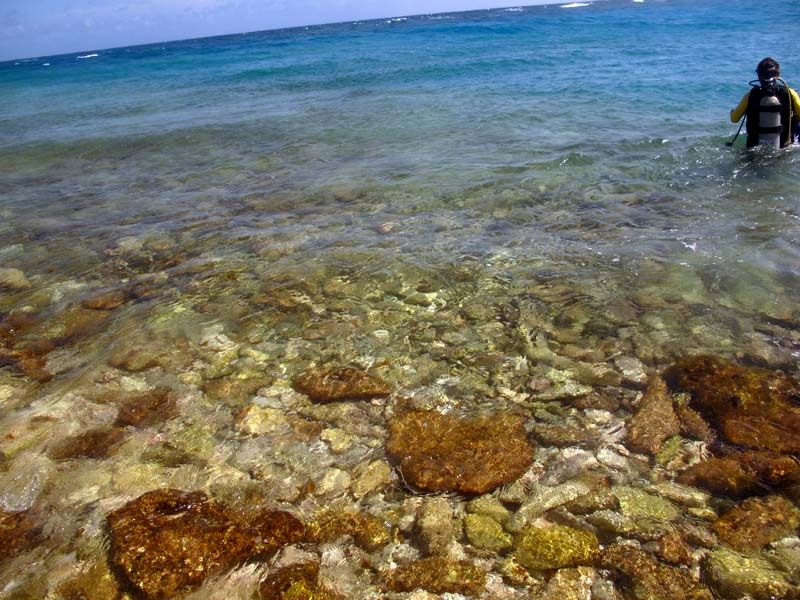
Doesn't look bad going in, and the big waves that pound the east coast so hard don't seem to slam the shore here. Of course, then we got in the water, and that was a different story altogether.
First off, pretty early on as we swam out straight away (roughly, I think) from shore, a side-current sent us to our left (roughly northward), vigorously - kinda like riding an airport's moving sidewalk side-ways. We had to swim out over a fairly long sandy swim out. We saw a tarpon pretty quickly:
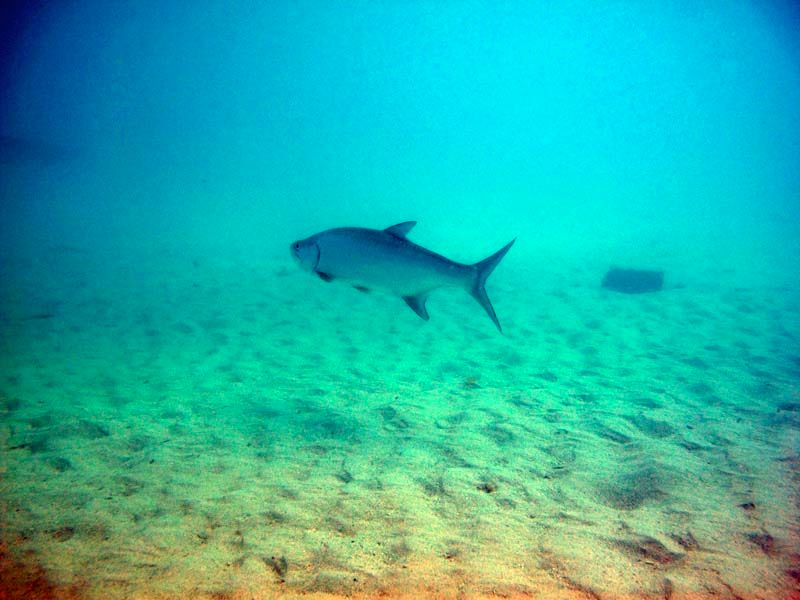
In fact, the sandy area has more larger fish than we're used to seeing on the west coast. Like these jacks.


And plenty of anemones:
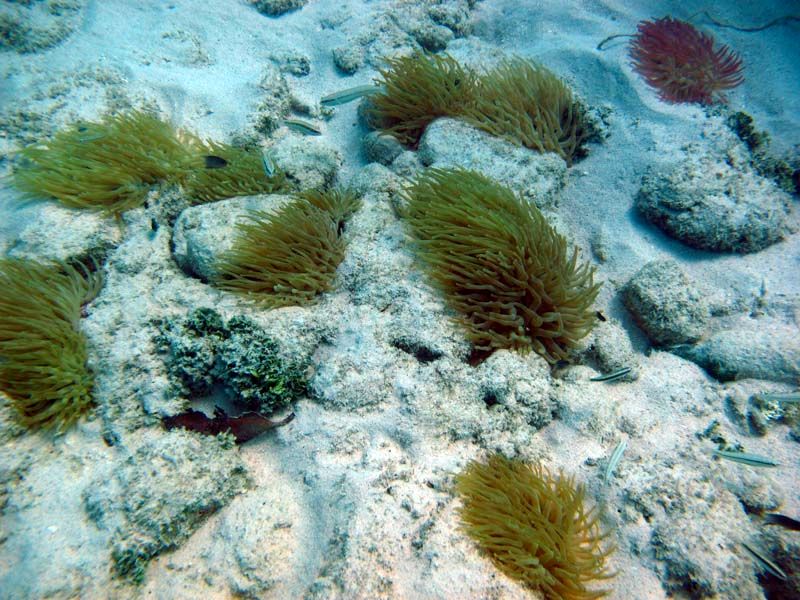
And the first star fish we ever found (Really big, too. Maybe a 8 to 10 inch arm span, at a rough guess?):
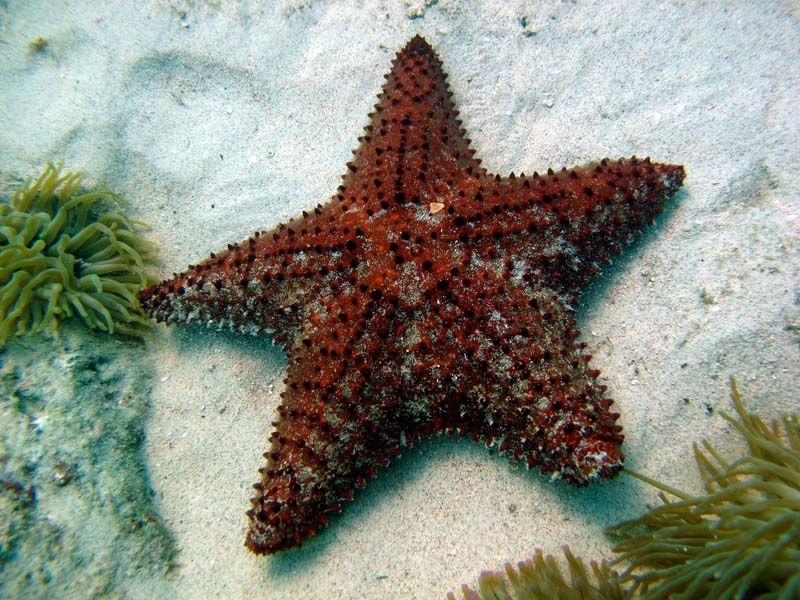
We crossed 2 stretches of sea grass; one looked like it'd been cut with a lawn mower, and the other didn't. No idea why the difference.
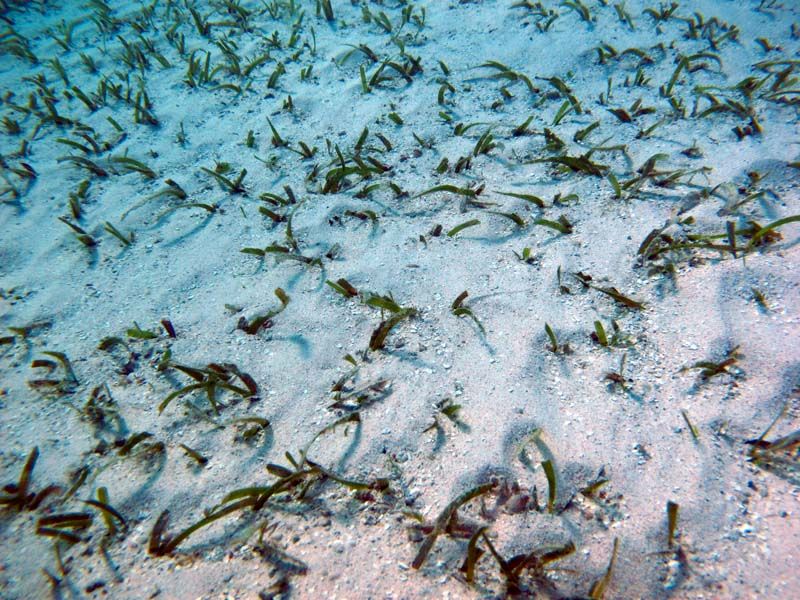
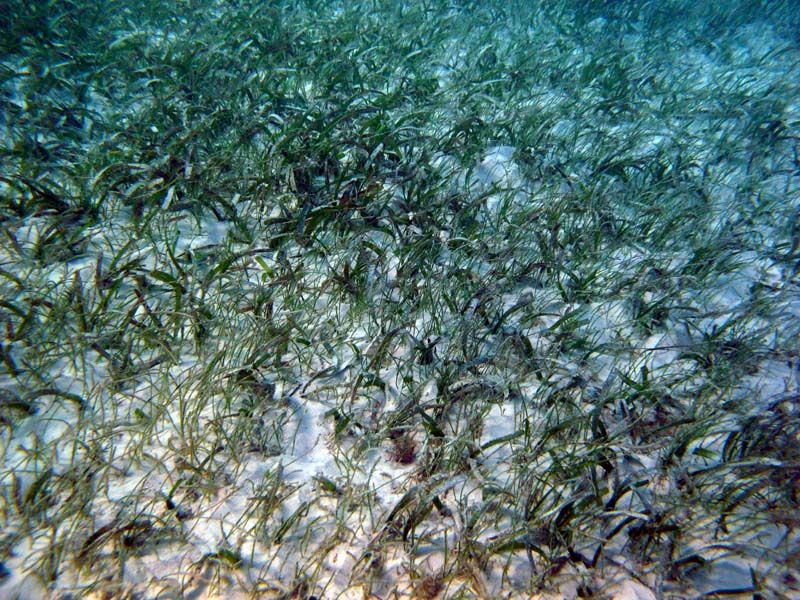
Big conch.

And the east coast has far & away more sea weed in places than I've seen anywhere on the west coast.
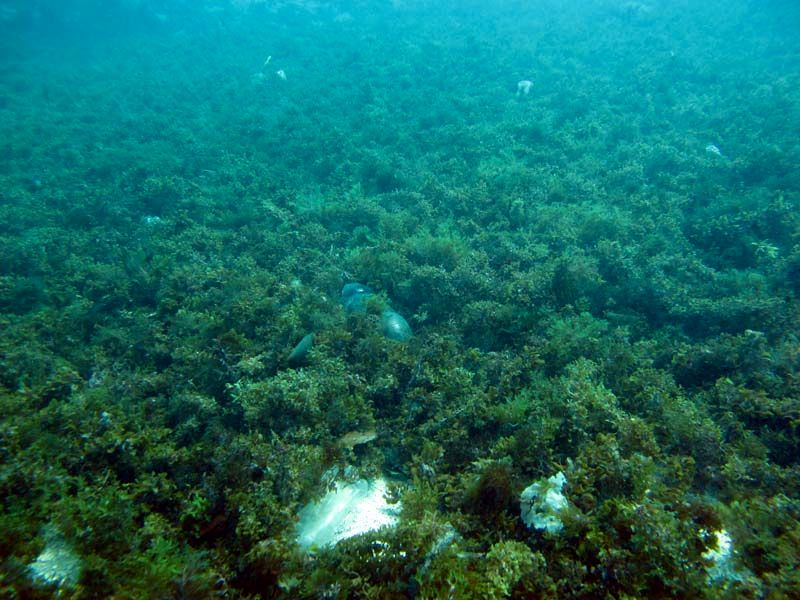
Anyway, after a vigorous swim across the sandy bottom, wondering whether the side-current has swept us up the coast & I'll be smashed into rocks by large waves getting out, we reach the drop-off - a vertical rock wall. We saw a distant sea turtle but I have no good pic of it.
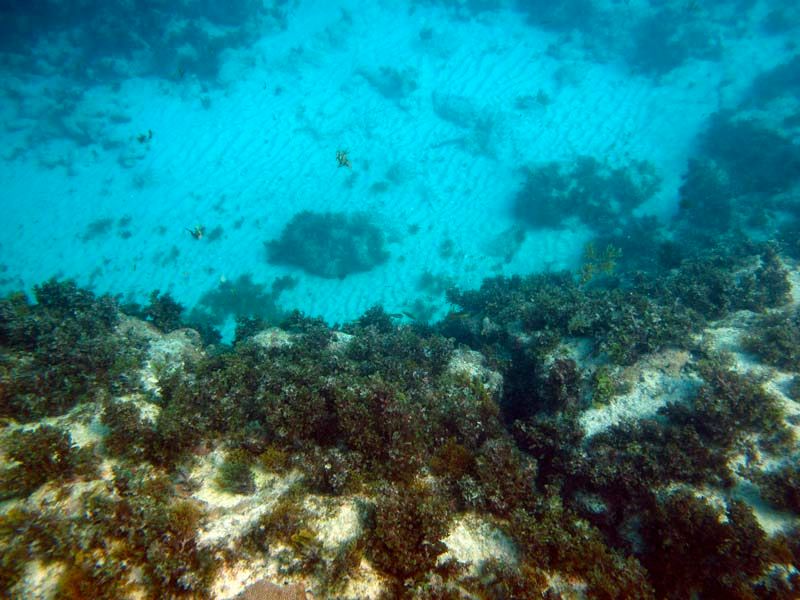
There was some reef.
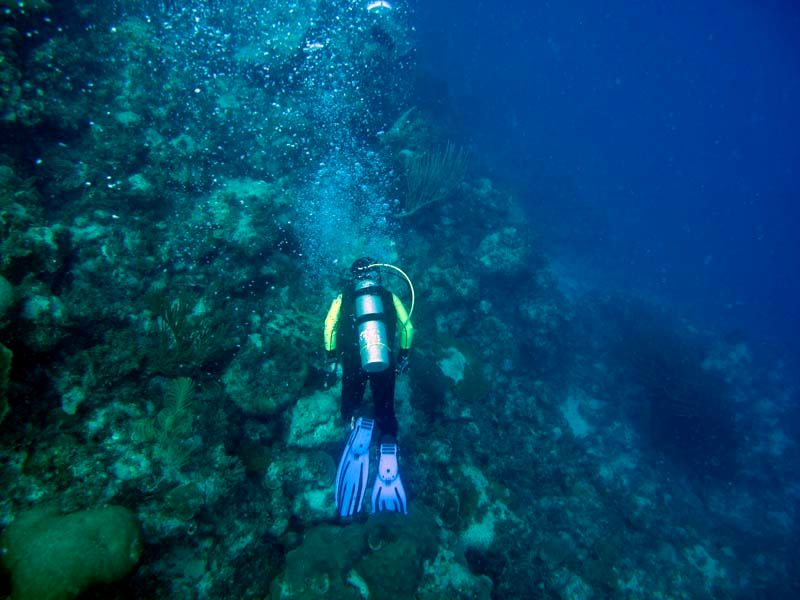
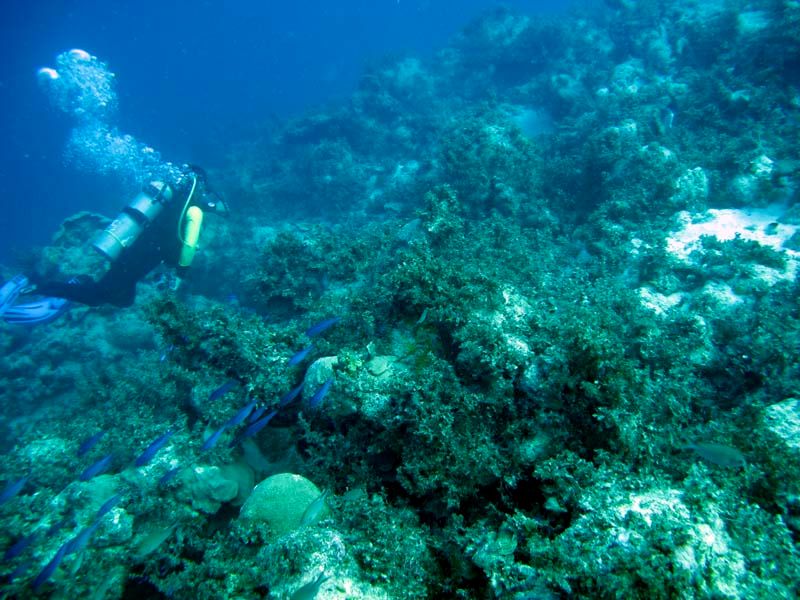
Bermuda Chubs.

At the bottom of the rock wall, in the crevices, my buddy found a lionfish, a good-sized grouper and a big green moray eel.

We saw our only Queen Triggerfish to date on this dive.
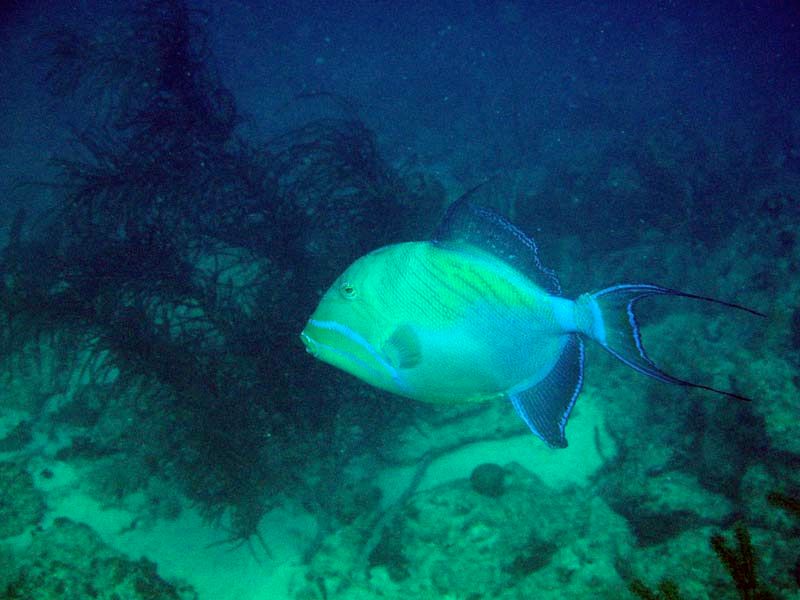
Can somebody tell me what the white thing is?
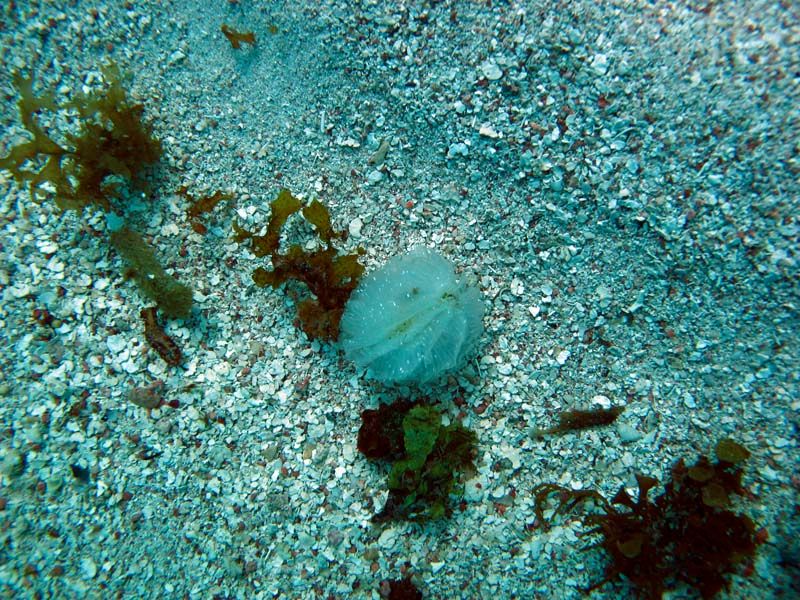
Somehow my buddy navigated us back to a decent exit point. Some basic info. on me & my dive, in case anybody plans to live dangerously and try what we did (which I don't recommend; this was a rather fast-paced, stressful dive, and I came out lower on air than is good; you can burn through gas fast on the swim back):
6'1", early-mid. 40's, out-of-shape & nearly 275 lbs., usual SAC around 0.65 - 0.7 cfm, EAN 32 80 cf aluminum tank, Sherwood Avid jacket-style BCD with 17 lbs lead weight, TUSA split fins, no wet suit.
57 Minute Dive (yet it was rather hurried), max. depth 58.3 feet, average depth 22.34 feet, SAC 0.80 cfm (high for me), starting pressure 3,051 cf, ending pressure 187 cf.
I later spoke with another dive who gave a glowing report of a boat dive at Cai. I suspect it's often better done by boat (& less stressful).
Summary: Swim-out & back are in-current and challenging, current can shift you side-ways making it hard to guesstimate how far you're being sent off-course, keeping your bearings can thus be difficult, gas consumption is higher than usual and given the need to 'haul it' staying with your buddy can be tough (especially if he swims a lot faster than you). Head back while you've still got plenty of gas. Pack an SMB & make sure someone on land knows what you're doing if you try this dive (which I'm not recommending).
For another take on Cai, check out this thread where forum member MoreCowBells posted (amongst other things):
Further Resource: ShoreDiving.com's page on Cai.
Richard.
Recently got back from a week in Bonaire, 4-20-13 to 4-27-13. So let me emphasize this dive took place on a trip in late August 2012, and was not from the most recent trip. Cai is an east coast shore dive, and as such can be 'challenging' - even downright dangerous. Normally someone suggested shore diving the east coast of Bonaire I'd look at them like they were crazy.
But I've got a good dive buddy, with very similar experience and certifications to my own (up through PADI Rescue, and we dive Nitrox EAN 32 there), and he's very athletic, small and lean, has great air consumption, can cut through current like a fish and has good situational awareness and is a much better navigator than me. (If you're curious, yeah, this is the buddy I made the ill-fated attempt at Playa Chikitu April 2013, described in a different thread).
It's generally recommended to most divers to avoid shore diving the east coast, at least without a guide, from what I understand. But 2 sites that do show up on the maps are Cai and White Hole. And he wanted to try it. So...
Disclaimer: I ran these pics through Adobe Photoshop Elements 8 for Mac, & used 'Autolevels' on all.
My aerial shot (from plane window departing) of the Lac Bay area. There's a dirt road cutting across the island, running alongside the green vegetated area. You head to the coast & take a left.

You come to what looks like a line of buildings ('shacks' comes to mind) on your right, and some big piles of conch shells along the coast.

We didn't have a guide, so we entered near where the shell piles start, if memory serves just north of there.
Pretty, huh?


Doesn't look bad going in, and the big waves that pound the east coast so hard don't seem to slam the shore here. Of course, then we got in the water, and that was a different story altogether.
First off, pretty early on as we swam out straight away (roughly, I think) from shore, a side-current sent us to our left (roughly northward), vigorously - kinda like riding an airport's moving sidewalk side-ways. We had to swim out over a fairly long sandy swim out. We saw a tarpon pretty quickly:

In fact, the sandy area has more larger fish than we're used to seeing on the west coast. Like these jacks.


And plenty of anemones:

And the first star fish we ever found (Really big, too. Maybe a 8 to 10 inch arm span, at a rough guess?):

We crossed 2 stretches of sea grass; one looked like it'd been cut with a lawn mower, and the other didn't. No idea why the difference.


Big conch.

And the east coast has far & away more sea weed in places than I've seen anywhere on the west coast.

Anyway, after a vigorous swim across the sandy bottom, wondering whether the side-current has swept us up the coast & I'll be smashed into rocks by large waves getting out, we reach the drop-off - a vertical rock wall. We saw a distant sea turtle but I have no good pic of it.

There was some reef.


Bermuda Chubs.

At the bottom of the rock wall, in the crevices, my buddy found a lionfish, a good-sized grouper and a big green moray eel.

We saw our only Queen Triggerfish to date on this dive.

Can somebody tell me what the white thing is?

Somehow my buddy navigated us back to a decent exit point. Some basic info. on me & my dive, in case anybody plans to live dangerously and try what we did (which I don't recommend; this was a rather fast-paced, stressful dive, and I came out lower on air than is good; you can burn through gas fast on the swim back):
6'1", early-mid. 40's, out-of-shape & nearly 275 lbs., usual SAC around 0.65 - 0.7 cfm, EAN 32 80 cf aluminum tank, Sherwood Avid jacket-style BCD with 17 lbs lead weight, TUSA split fins, no wet suit.
57 Minute Dive (yet it was rather hurried), max. depth 58.3 feet, average depth 22.34 feet, SAC 0.80 cfm (high for me), starting pressure 3,051 cf, ending pressure 187 cf.
I later spoke with another dive who gave a glowing report of a boat dive at Cai. I suspect it's often better done by boat (& less stressful).
Summary: Swim-out & back are in-current and challenging, current can shift you side-ways making it hard to guesstimate how far you're being sent off-course, keeping your bearings can thus be difficult, gas consumption is higher than usual and given the need to 'haul it' staying with your buddy can be tough (especially if he swims a lot faster than you). Head back while you've still got plenty of gas. Pack an SMB & make sure someone on land knows what you're doing if you try this dive (which I'm not recommending).
For another take on Cai, check out this thread where forum member MoreCowBells posted (amongst other things):
We did a dive with on the East side with Bas. First dive was at Cai. At first the surge was strong and the visibility less than optimal. We arrived to a sandy patch were were were surrounded by at least a hundred tarpon. It was so cool to kneel on the sand and watch them effortlessly drift by. Once we approached the reef wall, visibility vastly improved. The coral and marine life were wonderful. We saw a nurse shark, huge green moray, turtle and much more. Returning to shore yielded more surge, but it was manageable. As we were leaving, we saw other divers arrive to the area. While Cai is a milder dive on the East side, I still cannot imagine doing this without a guide.
Further Resource: ShoreDiving.com's page on Cai.
Richard.




